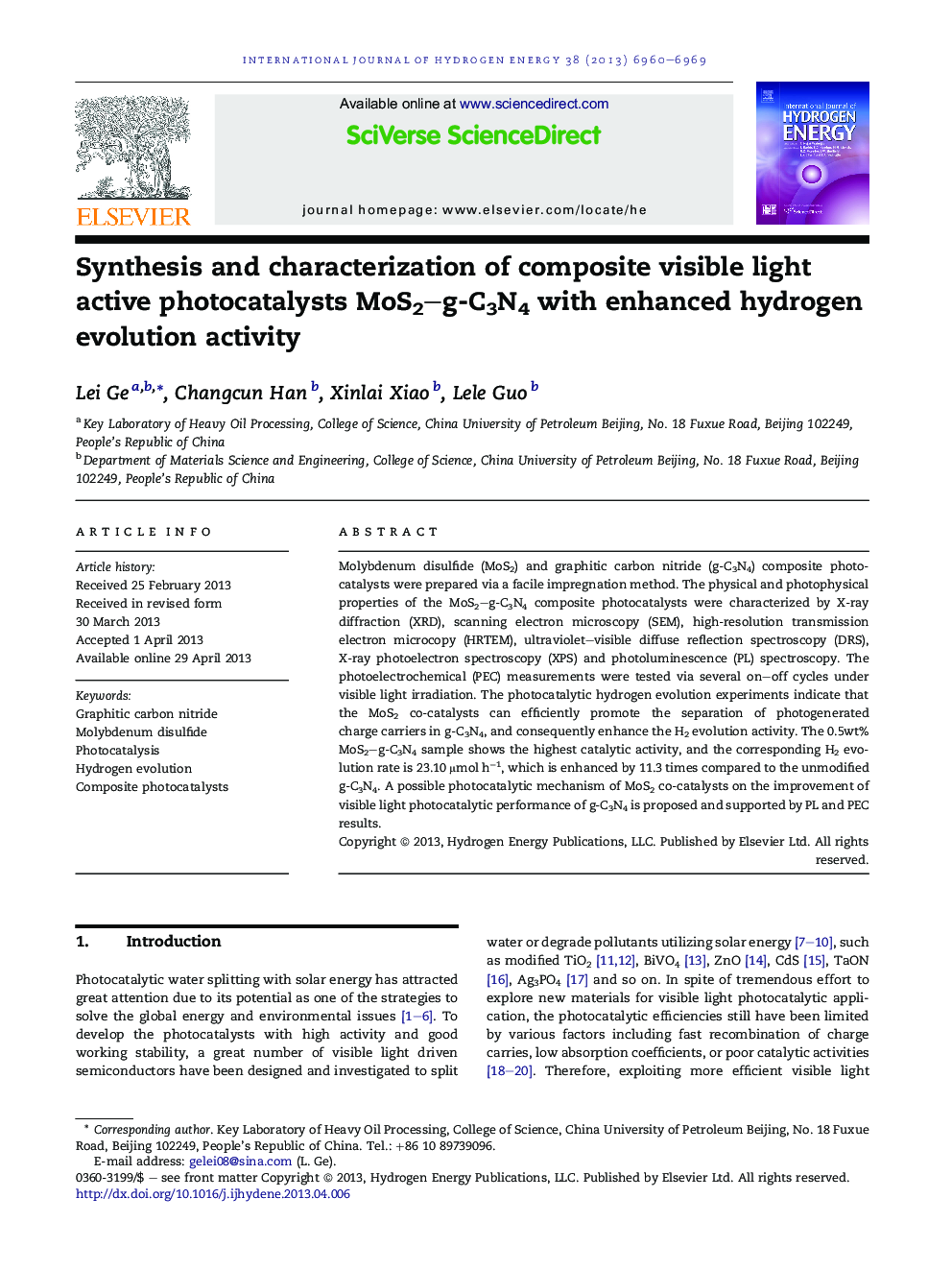| Article ID | Journal | Published Year | Pages | File Type |
|---|---|---|---|---|
| 1277480 | International Journal of Hydrogen Energy | 2013 | 10 Pages |
•MoS2–g-C3N4 composite photocatalyst was synthesized for the first time.•The MoS2–g-C3N4 showed remarkably enhanced hydrogen evolution activity.•The HRTEM revealed intimate interfaces between g-C3N4 and MoS2.•The intimate interfaces promote the charge transfer and separation.•The mechanism was proposed and confirmed by PL and PEC results.
Molybdenum disulfide (MoS2) and graphitic carbon nitride (g-C3N4) composite photocatalysts were prepared via a facile impregnation method. The physical and photophysical properties of the MoS2–g-C3N4 composite photocatalysts were characterized by X-ray diffraction (XRD), scanning electron microscopy (SEM), high-resolution transmission electron microcopy (HRTEM), ultraviolet–visible diffuse reflection spectroscopy (DRS), X-ray photoelectron spectroscopy (XPS) and photoluminescence (PL) spectroscopy. The photoelectrochemical (PEC) measurements were tested via several on–off cycles under visible light irradiation. The photocatalytic hydrogen evolution experiments indicate that the MoS2 co-catalysts can efficiently promote the separation of photogenerated charge carriers in g-C3N4, and consequently enhance the H2 evolution activity. The 0.5wt% MoS2–g-C3N4 sample shows the highest catalytic activity, and the corresponding H2 evolution rate is 23.10 μmol h−1, which is enhanced by 11.3 times compared to the unmodified g-C3N4. A possible photocatalytic mechanism of MoS2 co-catalysts on the improvement of visible light photocatalytic performance of g-C3N4 is proposed and supported by PL and PEC results.
Graphical abstractFigure optionsDownload full-size imageDownload as PowerPoint slide
